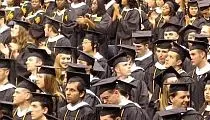When it comes to implementing progressive solutions to modern problems, universities often lead the way. In the case of energy efficient lighting, it is no different. Two institutes of higher learning, Harvard University and the University of Texas-Dallas, through their Offices of Sustainability, have recently made LEDs central to finding green lighting solutions for their campuses.
Harvard promotes sustainable energy
The Office of Sustainability at Harvard University has been at the forefront of that school's promotion of energy efficient lighting projects. Recently, the office hosted a lighting fair at the Science Center Plaza in front of the Harvard Farmers Market that served as open house for students and local residents.
Partnering with the federal Energy Star program and the Massachusetts' Mass Save program, the fair provided tools and resources that helped visitors find the right products and services to improve energy efficiency through smarter residential and commercial lighting. Among the products offered were a variety of LED light bulbs ranging in price from $5-10 that could lead to discounts of up to 90 percent on utility bills.
The fair was also part of Harvard's summer energy challenge, which creates competition among the university's eight largest office buildings to complete eight sustainability tasks by the middle of August.
Texas school installs LEDs in new buildings
The Office Of Sustainability at the University of Texas-Dallas has also recognized the need to make its campus more environmentally friendly through efficient commercial lighting. Two new facilities that are set to open this fall – the Edith O'Donnell Arts and Technology building and a five-level parking garage – will incorporate LED light bulbs.
Since lighting will represent a majority of energy consumption in both new structures, university officials came to realize that with their seven- to eight-year life spans, LEDs would provide better long-term financial and energy savings over the fluorescent bulbs they had originally intended to install. And with the new plan in place, the ATEC building will pursue Leadership in Environmental Energy Design Silver certification from the U.S. Green Building Council.
That effort has helped set a standard for UTD students to follow.
"These energy-efficient initiatives benefit students by being an effective use of their tuition funds," said Christine Cepelak, an intern in the Office of Sustainability. "(Students) can rest assured that the school is making decisions with their best long- and short-term interests in mind while exposing them to new technologies and sustainability on a growing campus."





